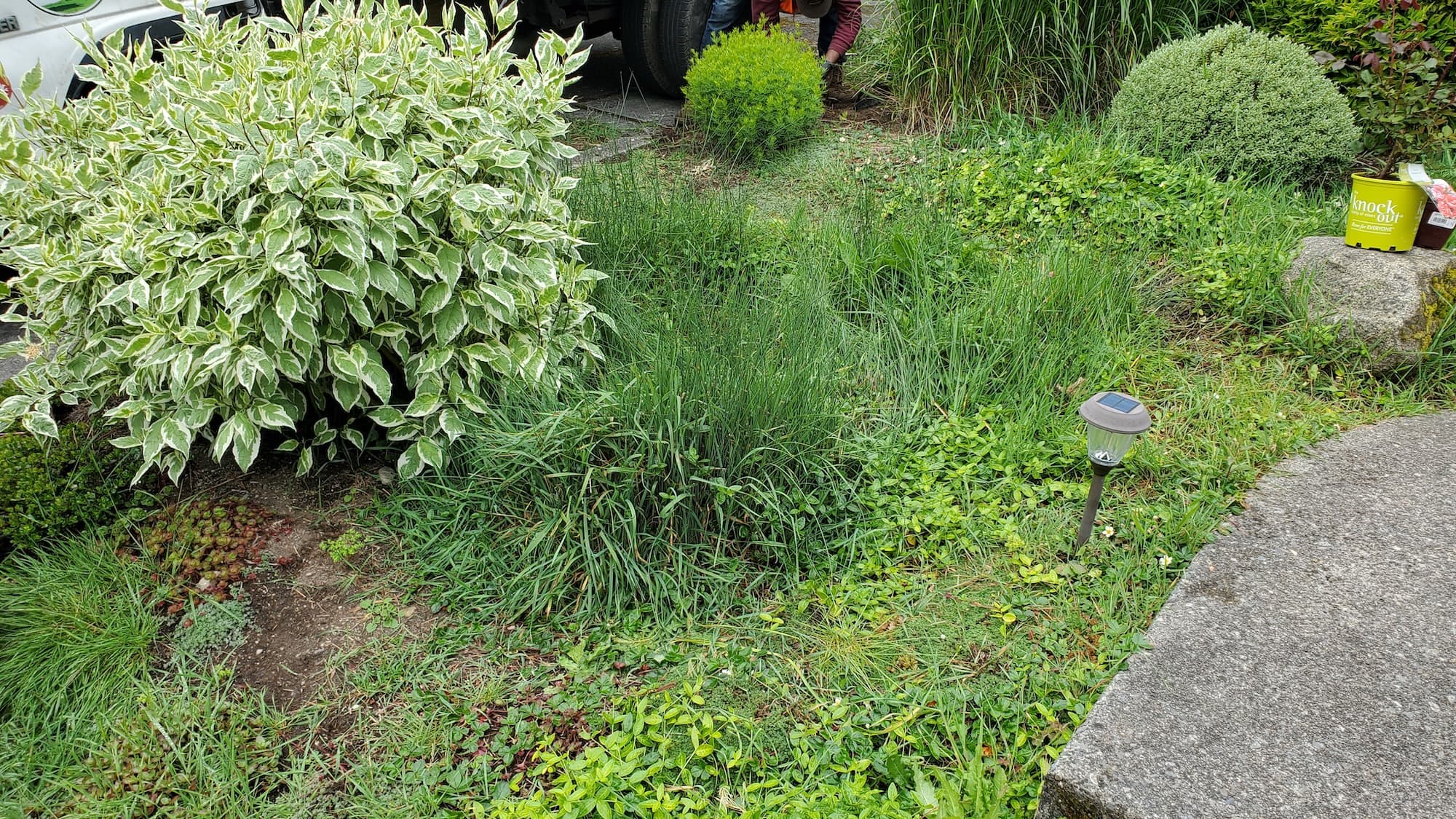Weeding Weeding
Homeowner’s Issue
Weeding yards around here have a few familiar headaches: heavy Pacific Northwest rainfall, compacted glacial soils, shady corners that grow moss, and sunny slopes that dry out quickly. In Weeding, shallow topsoil and poor drainage often let weeds take hold along fences, driveways, and storm drains. Slopes and terraces can accelerate erosion if invasive weeds or ivy are left to mat the soil, and many HOA rules in nearby White Center and West Seattle expect tidy, low-growing boundaries.
Typical offenders are dandelion, buttercup, chickweed, young ivy runners, and bindweed — all of which come back fast if only surface-cut. Homeowners also juggle curb appeal with practical limits: low-maintenance landscapes are preferred but require the right upfront work—manual root removal, strategic mulching, and edge definition—to stay tidy through the rainy season. Our local experience shows that hand-weeding, targeted soil improvement, and seasonal mulch beats quick chemical fixes for long-term results. We focus on sustainable, herbicide-free solutions tailored to the microclimates of street-facing beds, shady north sides, and sun-exposed slopes common in this part of town.
Our Quality Service
We use hands-on, sustainable methods — no herbicides — to clear and control problem plants. We assess soil, shade, and drainage, then pull roots, cut back runners, and improve edges so weeds don’t return as quickly. On slopes we add erosion-aware measures and adjust mulch depth to keep soil in place.
Benefits:
- Safer, herbicide-free yards for kids and pets.
- Better curb appeal and HOA-compliant borders.
- Lower maintenance over time with strategic fixes.
- Lasting results that respect local soil and rainfall patterns.
What we do on every visit
- Hand-pull and root-out weed infestations.
- Re-edge beds and pathways for clear boundaries.
- Apply mulch or fabric where appropriate.
- Haul away debris or leave suitable material for green bin composting.
- Offer seasonal follow-up plans to keep regrowth minimal.
What’s Included
- Site assessment and weed prioritization
- Manual weed removal and light digging for roots
- Bed edging and cleanup of borders
- Mulch application (if selected)
- Haul-away or green bin disposal options
- Post-service care notes
Optional upgrades:
- Mulch + landscape fabric for heavy weed pressure
- Organic, non-chemical spot treatments (mechanical/thermal where allowed)
- Soil aeration and compost top-dressing
- Replanting low-maintenance native groundcovers
Before & After / Expectations
Expect some noise from trimmers and leaf blowers and a day of activity depending on yard size. We’ll need clear access to beds and a nearby place to stage debris. After work, there will be loose material and disturbed soil — we clean up and haul loads as agreed.
Care tips for Weeding yards:
- Keep a 2–3” mulch layer on beds, refreshed annually.
- Inspect edges monthly during spring and fall seasons.
- Remove young runners of ivy and bindweed immediately — they’re easier to pull.
- Improve drainage on wet spots with soil amendment or raised beds.
FAQs
Q: Do you use herbicides?
A: No. We use manual, mechanical, and organic methods only.
Q: How long does a typical visit take?
A: Most small to medium yards are completed in a half to full day; large or slope-heavy properties may take longer.
Q: Will this disturb my lawn or plants?
A: We focus on targeted work — protective measures are used to avoid unintended damage.
Q: How often should I schedule follow-ups?
A: Every 6–12 weeks during growing season works for most properties; we’ll tailor a cadence to your yard.
Call to Action
Weeding homeowners: book a free estimate and we’ll plan a sustainable, low-maintenance approach that fits your schedule. Fast scheduling, local know-how, and reliable, herbicide-free results. Email: neatandtidyseattle@gmail.com or call 206-538-9344 to get started. Licensed & insured local crew with 15 years in Seattle landscaping.










